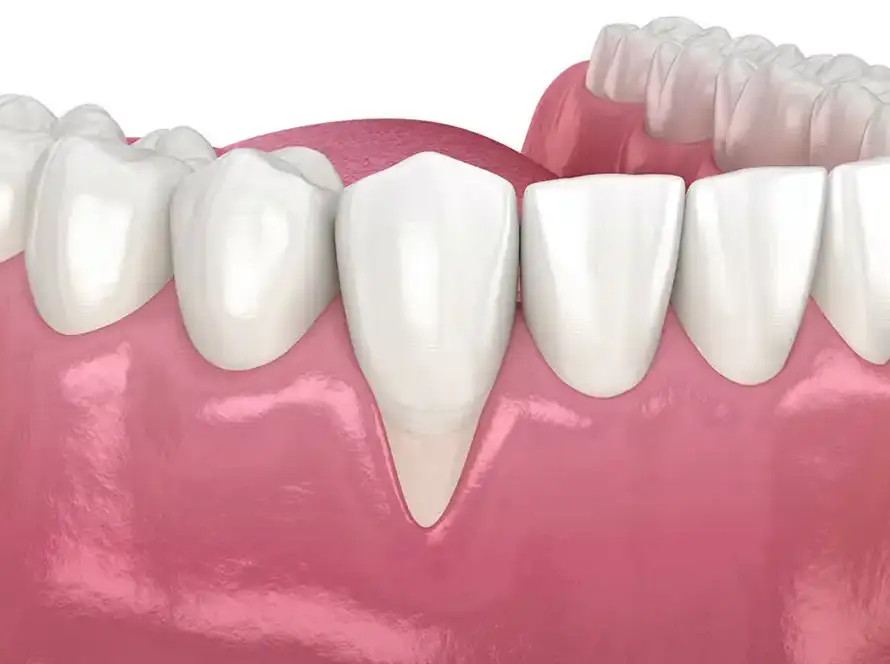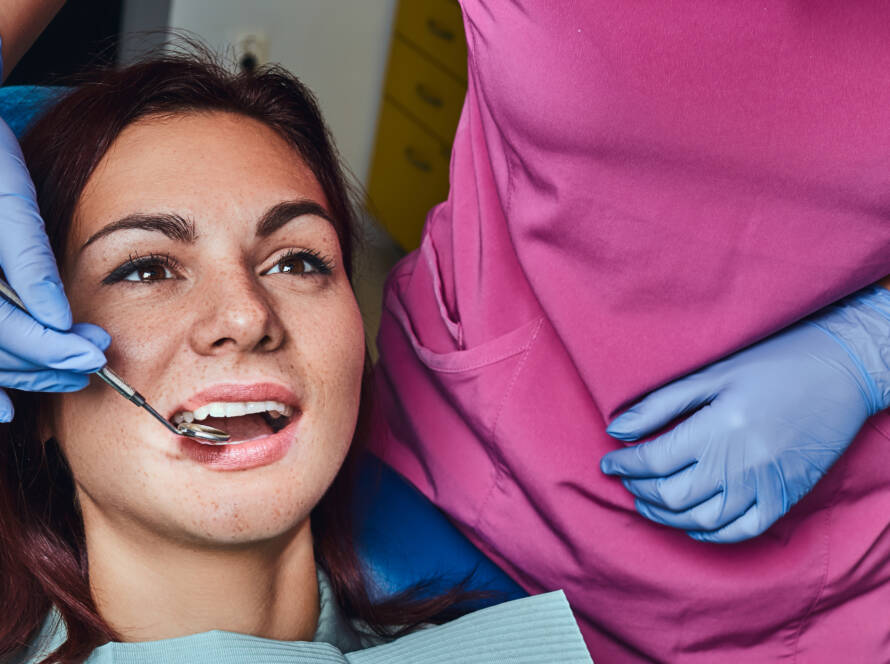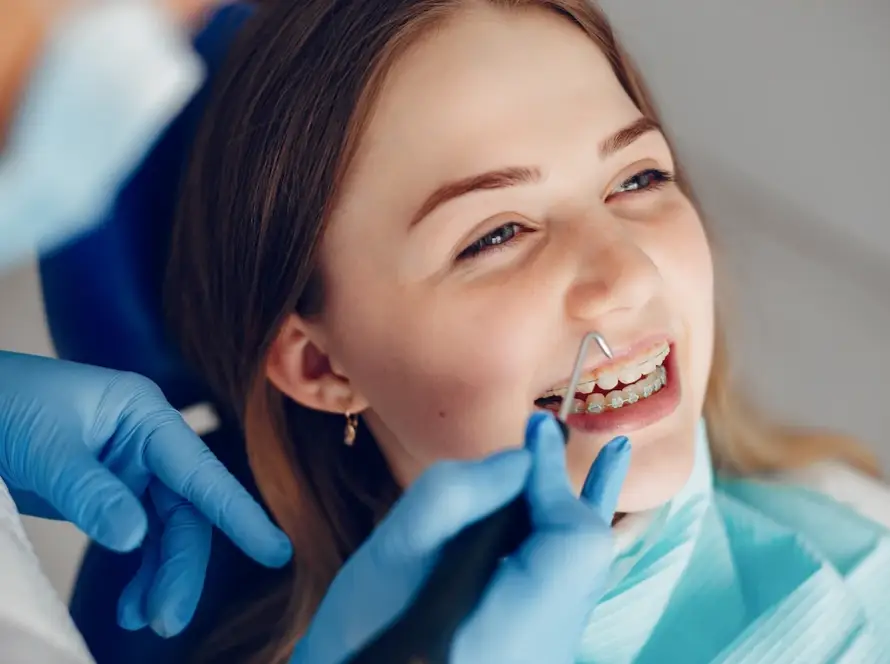Tooth cysts, or dental cysts, are pathological cavities filled with fluid or soft material that can develop in the bones or soft tissues around teeth. They often progress without noticeable symptoms, making early diagnosis crucial. Understanding the etiology, types, and potential complications associated with tooth cysts is essential for timely and effective management.
Etiology
Tooth cysts primarily arise due to the following reasons:
- Infection: Bacterial infections stemming from untreated cavities or pulpitis can lead to cyst formation.
- Trauma: Physical injury to a tooth or its supporting structures may result in cyst development.
- Developmental abnormalities: Genetic factors contribute to the formation of certain types of tooth cysts.
- Root canal failures: Incomplete or failed root canal treatments can also result in cyst formation.
Types of Tooth Cysts
There are several types of tooth cysts, each with distinct characteristics:
- Periapical (Radicular) Cysts: These form at the apex of a tooth’s root, typically resulting from untreated dental abscesses.
- Dentigerous (Follicular) Cysts: These occur around the crown of unerupted or developing teeth, mostly impacting the wisdom teeth.
- Odontogenic Keratocysts: Known for their aggressive behavior, they arise from the dental lamina.
- Periodontal Cysts: These develop in the tooth-supporting tissues, such as the gums and bone surrounding a tooth.
Potential Complications
If left untreated, tooth cysts can lead to severe complications, including:
- Tooth loss: Progressive cyst growth can result in the destruction of surrounding dental structures leading to tooth instability.
- Jawbone damage: The pressure exerted by expanding cysts can cause significant bone resorption.
- Infection spread: Untreated cysts can lead to the spread of infection to adjacent teeth and surrounding tissues.
- Pathologic fractures: Extensive bone weakening may result in fractures, particularly in the jaw.
- Malignant transformation: Though rare, some types of cysts have the potential for malignant transformation.
Diagnostic Techniques
Accurate diagnosis of tooth cysts involves multiple methodologies:
- Dental X-rays: Provide a detailed view of the cyst’s location, size, and effect on adjacent structures.
- CT scans: Offer three-dimensional imaging for intricate cyst morphology and localization.
- Biopsy: Confirms the cyst type through histopathological examination of the cyst lining or contents.
- Clinical examination: Identifies signs of infection, swelling, or fistula formation.
Understanding the fundamentals of tooth cysts—highlighting their etiology, types, potential complications, and diagnostic techniques—forms the foundation for effective early diagnosis and management strategies.
What is a Tooth Cyst?
A tooth cyst is a closed, fluid-filled sac that develops in or around the roots of a tooth, laid within the jawbone. It typically forms as a response to infection, decay, or a trapped growth of cells. Tooth cysts can vary in size, ranging from small, hardly noticeable formations to larger cysts that can cause discomfort and lead to further dental issues if left untreated.
There are several types of tooth cysts, each with different causes and characteristics:
- Periapical Cyst:
- Commonly occurs at the tip of a tooth’s root.
- Typically results from untreated dental caries or trauma.
- Often associated with non-vital teeth.
- Dentigerous Cyst:
- Forms around the crown of an unerrupted or developing tooth, generally affecting wisdom teeth.
- Can cause displacement of adjacent teeth.
- Keratocystic Odontogenic Tumor (KCOT):
- Known for its aggressive nature and high recurrence rate.
- Develops from remnants of dental lamina.
- Residual Cyst:
- Remains in the jawbone post-tooth extraction.
- Typically lesional tissues left behind after removal of a problematic tooth.
Tooth cysts are often asymptomatic in early stages, making self-diagnosis difficult. However, as they enlarge, various symptoms can emerge such as:
- Persistent jaw pain or gum swelling.
- Visible lumps or swelling in the mouth.
- Trouble with tooth alignment or displacement.
Diagnosis is primarily achieved through dental X-rays or advanced imaging techniques like CT scans. Routine dental exams are crucial in identifying cysts early. Once diagnosed, treatment options include:
- Endodontic Therapy: To address cysts resulting from root canal infections.
- Surgical Removal: For large or problematic cysts.
- Marsupialization: Creating an opening in the cyst to allow continuous drainage.
Understanding and identifying tooth cysts is a vital component of preventive dental care. Without timely intervention, they can lead to complications like infection spread, jawbone deterioration, or even tooth loss.
Common Symptoms of a Tooth Cyst
Tooth cysts can often go unnoticed in the early stages due to the absence of symptoms. However, as the cyst grows, various signs may begin to manifest. Recognizing these symptoms is vital for early intervention and effective treatment.
Localized Pain
- Pain Around the Affected Tooth: Individuals may experience persistent pain or discomfort surrounding the infected tooth.
- Sensitivity: Increased sensitivity, especially to hot and cold temperatures, can be an indication of an underlying cyst.
Visible Signs
- Swelling: Noticeable swelling in the gums around the affected area.
- Lump Formation: A palpable lump may form in the gums, which can be a visible indication of the presence of a cyst.
Dental Issues
- Loose Teeth: Teeth in the vicinity of the cyst can become loose due to bone loss around the affected area.
- Tooth Discoloration: The involved tooth may appear discolored or darkened, suggestive of underlying infection.
Infection Indicators
- Pus Discharge: In some cases, there may be a discharge of pus, resulting in a bad taste or odor in the mouth.
- Fever: Infection may lead to systemic symptoms like fever, indicating the body’s response to the infection.
Radiographic Findings
- X-rays: Dental x-rays often reveal cysts not yet presenting symptomatic issues detectable by physical examination.
Systemic Manifestations
- Facial Swelling: Swelling may expand beyond the gums, causing noticeable facial asymmetry.
- Lymph Node Enlargement: Swollen lymph nodes may occur if the body’s immune system is responding to the infection.
These symptoms, while not exhaustive, provide essential indicators for dental professionals to diagnose and manage tooth cysts effectively. Early identification and prompt treatment are crucial in preventing complications and preserving oral health. Regular dental check-ups and prompt attention to any of these symptoms are essential steps in the early detection and management of tooth cysts.
Causes and Risk Factors of Tooth Cysts
Tooth cysts, also known as dental cysts, primarily form due to various underlying dental issues. Understanding the causes and recognizing the risk factors can significantly aid in early diagnosis and effective management.
Causes
- Infections and Inflammation
- Persistent bacterial infections can lead to the development of pus-filled cysts in and around the tooth structure.
- Chronic inflammation resulting from untreated dental decay or gum disease is a common precursor.
- Dental Trauma
- Physical injury or trauma to the teeth can damage the internal structures, creating a conducive environment for cyst formation.
- Accidental fractures or cracks in the teeth can introduce pathogens that facilitate cyst development.
- Developmental Issues
- Congenital defects may predispose individuals to cyst formation as teeth develop.
- Anomalies in tooth formation can lead to retained tissues that subsequently form cysts.
- Impacted Teeth
- When teeth, particularly wisdom teeth, fail to emerge properly, the surrounding tissue can become cystic.
- The pressure exerted by impacted teeth on adjacent structures often leads to cyst formation.
- Medications
- Certain long-term medications might affect dental health, leading to cystic changes in the gums and teeth.
Risk Factors
- Age
- Middle-aged to older adults are at higher risk due to cumulative exposure to dental issues over time.
- Poor Oral Hygiene
- Inadequate brushing and flossing routines increase the likelihood of infections and subsequent cysts.
- History of Dental Procedures
- Previous procedures such as root canals or dental implants may create conditions favorable for cyst formation.
- Genetic Predisposition
- Family history of dental cysts or related conditions can significantly increase one’s risk.
- Smoking and Alcohol Use
- Both smoking and excessive alcohol consumption are linked to increased dental problems, including cysts.
- Underlying Health Conditions
- Diseases that compromise the immune system, such as diabetes, can elevate the risk of developing dental cysts.
Dental professionals must consider these causes and risk factors when evaluating potential cases of tooth cysts to prevent complications and ensure timely, effective treatment.
Types of Tooth Cysts
Tooth cysts, also known as dental cysts, can vary significantly in terms of their origin, development, and implications for oral health. Each type of cyst requires a precise understanding and management strategy to mitigate potential complications. Gaining insights into the various kinds of tooth cysts is essential for dental practitioners and patients alike.
Periapical Cysts
- Origin: These cysts develop at the apex of a tooth root, typically due to inflammation or infection following the death of the tooth’s pulp.
- Identification: Dentists generally identify periapical cysts during routine X-rays.
- Treatment: Root canal therapy or extraction is often necessary.
Dentigerous Cysts
- Origin: Dentigerous cysts form around the crown of an unerupted or developing tooth, commonly affecting wisdom teeth and canines.
- Identification: These cysts are identified through radiographic examination and can cause displacement of teeth.
- Treatment: Surgical removal of the cyst along with the affected tooth is standard.
Keratocystic Odontogenic Tumors (KCOT)
- Origin: KCOTs are aggressive cysts arising from dental lamina and are more common in the lower jaw.
- Identification: Known for high recurrence rates, they are identified via radiographic and histological examination.
- Treatment: Combines surgical intervention with adjunctive therapies to reduce recurrence. Frequent monitoring post-treatment is necessary.
Residual Cysts
- Origin: These cysts form following the incomplete removal of a periapical cyst, often after tooth extraction.
- Identification: Detected during routine dental checks, usually by X-rays.
- Treatment: Surgical removal remains the primary approach.
Paradental Cysts
- Origin: Typically associated with partially erupted molars, these cysts result from inflammation around the crown.
- Identification: Dentists detect these cysts through physical examination and imaging.
- Treatment: Extraction of the impacted tooth and curative surgical procedures.
Lateral Periodontal Cysts
- Origin: Developing along the side of a tooth root, these cysts are relatively rare and often asymptomatic.
- Identification: Identified during radiographic procedures and might initially present as benign.
- Treatment: Minimally invasive surgical removal is the usual course of action.
A thorough understanding of these types of tooth cysts is crucial for timely diagnosis and effective management, ensuring better oral health outcomes for patients.
How a Tooth Cyst is Diagnosed
The diagnostic process for identifying a tooth cyst encompasses several steps, ensuring accuracy and comprehensiveness. Various methodologies and tools contribute to this meticulous process.
- Patient History and Symptoms Review
The process starts with a thorough review of the patient’s medical and dental history. Understanding previous oral health issues and any symptoms can provide initial clues. - Clinical Examination
A dental professional performs a visual and tactile examination of the oral cavity. This examination might reveal signs such as swelling, discomfort, or unusual growths that warrant further investigation. - Radiographic Imaging
- X-rays: Panoramic dental X-rays are often the first imaging step. They provide a broad view of the teeth, jaws, and surrounding structures, highlighting areas of concern.
- Cone Beam Computed Tomography (CBCT): CBCT scans offer three-dimensional images that facilitate detailed examination and precise localization of the cyst.
- Vitality Testing
To distinguish between different types of anomalies, dental professionals may perform vitality tests on the affected tooth. These tests assess the health of the tooth’s nerve and blood supply, aiding in differential diagnosis. - Aspiration
In some cases, a needle aspiration may be necessary. This procedure involves extracting fluid from the cyst for further analysis, helping to confirm the diagnosis and rule out other conditions such as abscesses. - Biopsy
To rule out malignancy, a biopsy may be performed. This involves removing a small sample of tissue from the cyst for histopathological examination, providing definitive insights into the nature of the cyst. - Consultation with Specialists
In complex cases, referrals to oral surgeons, endodontists, or other specialists may be required. These professionals bring additional expertise and can offer advanced diagnostic techniques. - Patient Communication
Throughout the diagnostic process, effective communication with the patient is crucial. Patients need to be informed of the findings, potential implications, and the steps involved in confirming the diagnosis.
Each of these steps plays a vital role in ensuring a precise and reliable diagnosis of a tooth cyst. Comprehensive diagnostic methods are essential in developing an appropriate treatment plan and mitigating potential complications.
The Importance of Early Diagnosis
Early diagnosis of tooth cysts is paramount in preventing the progression of the condition and ensuring effective treatment. Identifying tooth cysts at an initial stage can significantly decrease the risk of complications, debilitating pain, and extensive dental work.
Benefits of Early Detection
- Early Intervention and Treatment:
- Timely identification allows for less invasive treatments.
- Minimizes the extent of surgical intervention, preserving more of the natural tooth structure.
- Prevention of Complications:
- Helps prevent the cyst from growing larger and causing damage to surrounding teeth and bone.
- Reduces the likelihood of infection, which can spread and lead to more severe health issues.
- Cost Efficiency:
- Treating minor issues early is generally less expensive than addressing advanced dental problems.
- Reduces the need for more extensive and costly procedures like tooth extractions, bone grafts, or implants.
Diagnostic Methods
- Routine Dental Examinations:
- Regular dental check-ups increase the likelihood of detecting cysts before they cause symptoms.
- Dentists can perform a clinical examination to look for any signs of cyst development.
- Radiographic Imaging:
- X-rays are crucial in identifying cysts that may not be visible during a physical exam.
- Advanced imaging techniques such as CT scans can provide detailed views of the cyst’s size and impact on nearby structures.
- Dental History and Symptoms:
- Understanding a patient’s dental history can provide insights into potential risk factors for cyst development.
- Symptoms such as swelling, pain, or changes in tooth alignment may prompt further investigation.
Role of Dental Practitioners
- Education and Awareness:
- Dentists should inform patients about the importance of early diagnosis and routine check-ups.
- Providing information on signs and symptoms of tooth cysts encourages patients to seek timely care.
- Regular Monitoring:
- Continuous monitoring of dental health can help track the development of any anomalies.
- Maintaining comprehensive patient records aids in recognizing patterns and early signs.
- Referral to Specialists:
- In cases where advanced care is needed, timely referrals to oral surgeons or endodontists are crucial.
- Collaboration with specialists ensures comprehensive management of the condition.
In summary, early diagnosis of tooth cysts is vital in preventing severe dental complications and promoting overall oral health.
Treatment Options for Tooth Cysts
Non-Surgical Treatments
Non-surgical treatments are often the first line of defense for managing tooth cysts. They aim to reduce infection and inflammation, and they can sometimes eliminate the cyst altogether without invasive procedures.
Antibiotics
- Use to control infections.
- Typically prescribed when the cyst is causing a significant infection or swelling.
- May be used in conjunction with other treatments.
Root Canal Therapy
- Effective for cysts originating from the root of a tooth.
- Involves removing the infected or damaged pulp, cleaning the canal, and sealing it.
Surgical Treatments
When non-surgical methods are insufficient, surgical interventions may be necessary to remove the cyst and prevent further complications.
Cystectomy
- Complete removal of the cyst.
- Often performed under local anesthesia.
- Involves removing the cyst and sometimes the associated tooth if it cannot be saved.
Marsupialization
- Alternative to cystectomy.
- Involves creating a small incision to drain the cyst, reducing its size gradually.
- Typically used for larger cysts.
Apicoectomy
- Surgical removal of the apex (tip) of the tooth root.
- Often performed when a cyst persists after a root canal.
- Seals the end of the root canal to prevent recurrence.
Adjunctive Treatments
Adjunctive treatments complement the primary procedures to ensure optimal healing and prevent recurrence.
Bone Grafting
- Applied when significant bone loss has occurred.
- Helps in regenerating the bone structure.
- Essential for maintaining oral stability.
Laser Therapy
- Minimally invasive option for smaller cysts.
- Promotes faster healing with less discomfort.
- Reduces the risk of infection post-surgery.
Post-Treatment Care
Proper post-treatment care is pivotal for ensuring successful recovery and preventing recurrences.
- Regular follow-up appointments for monitoring progress.
- Good oral hygiene practices to maintain oral health.
- Avoiding hard or chewy foods during the healing period.
Treatment options for tooth cysts vary based on the cyst’s size, location, and severity. Individualized treatment plans should be devised to effectively manage and resolve the condition.
Complications from Untreated Tooth Cysts
Tooth cysts that remain untreated can lead to a range of complications, affecting both oral and systemic health. Below are some potential complications associated with untreated tooth cysts:
Dental and Oral Health Complications
- Infection: The cyst can become infected, resulting in abscess formation. This can cause severe pain, swelling, and pus discharge.
- Bone Loss: An untreated cyst can lead to resorption of the jawbone, which can compromise the structural integrity of the jaw.
- Tooth Displacement: The pressure exerted by a growing cyst can lead to displacement or loosening of teeth.
- Tooth Loss: In severe cases, the structural damage can result in the loss of one or more teeth.
- Damage to Adjacent Structures: The expansion of the cyst can damage adjacent teeth, nerves, and tissues. This could necessitate more extensive dental procedures.
Functional Complications
- Difficulty in Eating: Pain and swelling from an untreated cyst can impede normal chewing and biting functions.
- Speech Impairment: Changes in the alignment or loss of teeth can affect speech articulation.
- Sinus Problems: In upper jaw cysts, there is a risk of the cyst encroaching into the sinus cavity, leading to sinusitis.
Aesthetic Complications
- Facial Swelling: Untreated cysts can cause noticeable swelling and distortion of the facial contours.
- Scarring: Surgical removal of an infected cyst may lead to scarring, especially if the cyst was large or in a complicated location.
Systemic Health Complications
- Systemic Infection: An untreated dental cyst can become a source of systemic infection, leading to conditions such as sepsis if bacteria spread through the bloodstream.
- Chronic Inflammation: Persistent inflammation from a cyst may contribute to overall systemic inflammation, which has been linked to other health conditions like cardiovascular disease.
Financial Implications
- Increased Treatment Costs: Delaying treatment often results in more complex, time-consuming, and costly procedures to manage the complications.
- Time Off Work: More severe treatments may require more recovery time, resulting in lost workdays and productivity.
Psychological Impact
- Stress and Anxiety: The pain and uncertainty associated with untreated cysts can contribute to psychological stress and anxiety.
- Decreased Quality of Life: Overall, the physical discomfort and aesthetic changes can significantly impact an individual’s quality of life.
Preventive Measures for Tooth Cysts
Preventive strategies play a vital role in reducing the risk of developing tooth cysts. These measures encompass a variety of practices and habits designed to maintain oral health and minimize factors that contribute to cyst formation. Key preventive measures include:
Regular Dental Check Ups
- Biannual Visits: Scheduling dental appointments at least twice a year allows for early detection of potential issues.
- Professional Cleanings: Dentist-performed cleanings remove plaque and tartar, reducing the risk of infections that could lead to cysts.
- Monitoring Oral Health: Routine x-rays and thorough examinations monitor for abnormalities such as cysts or tumors.
Effective Oral Hygiene Practices
- Daily Brushing: Brushing teeth at least twice daily with fluoride toothpaste helps maintain dental health.
- Flossing: Daily flossing removes food particles and plaque between teeth and gum lines.
- Mouthwash: Using an antiseptic mouthwash reduces harmful bacteria that could affect dental health.
Dietary Considerations
- Balanced Diet: Consuming a diet rich in vegetables, fruits, proteins, and dairy supports overall oral health.
- Limiting Sugary Foods: Reducing intake of sugary snacks and drinks prevents cavities and bacterial buildup.
- Hydration: Drinking plenty of water throughout the day ensures adequate saliva production, which is vital for oral hygiene.
Habits and Lifestyle Adjustments
- Avoiding Tobacco: Refraining from smoking and tobacco use significantly reduces the likelihood of oral infections.
- Limiting Alcohol: Excessive alcohol consumption can contribute to poor oral health and increase cyst formation risks.
- Stress Management: Practicing stress-relief techniques can prevent behaviors like teeth grinding, which could contribute to oral health problems.
Prompt Treatment of Dental Issues
- Addressing Cavities: Treating cavities promptly prevents them from progressing into more serious conditions.
- Managing Gum Disease: Early intervention in gum disease can prevent complications that might lead to cyst formation.
- Timely Extractions: Removing problematic teeth before they cause secondary issues reduces cyst risks.
Orthodontic Care
- Regular Monitoring: Orthodontists should monitor teeth alignment and emergent issues, such as misalignment that could cause cysts.
- Orthodontic Treatments: Proper orthodontic treatments can correct alignment issues and prevent complications.
Education and Awareness
- Patient Education: Educating patients about the importance of oral hygiene and regular dental visits empowers them to take proactive measures.
- Awareness Campaigns: Initiatives to raise awareness about dental health can encourage good habits and preventive care.
By adhering to these preventive measures, individuals can significantly reduce the risk of developing tooth cysts, ensuring better oral health and overall well-being.
When to See a Dentist
Early detection of tooth cysts is integral to effective management and treatment. Patients should consider seeing a dentist under the following circumstances:
- Persistent Pain or Discomfort: Any prolonged pain, swelling, or discomfort in the mouth or jaw is a potential indicator of a developing tooth cyst. This discomfort might not always be severe, but consistent pain warrants a dental consultation.
- Visible Swelling or Lump: If a patient notices a swelling or lump in the gum area, it might be a sign of a cyst. Any abnormal growth in the mouth should be examined swiftly to prevent complications.
- Infection Symptoms: Signs of infection, including fever, bad breath, or a foul taste in the mouth, demand immediate attention. Such symptoms can indicate the presence of an infected cyst, which requires urgent medical intervention.
- Changes in Sensation: Any unexplained changes in sensation, such as numbness or tingling in the mouth or face, should be evaluated. These symptoms can be associated with nerve involvement due to a growing cyst.
- Dental Anomalies: Unexplained loosening of teeth, difficulties in chewing, or noticeable changes in alignment could be due to underlying cysts affecting the dental structure. Immediate dental assessment is crucial in these situations.
- Inflammation or Redness: Persistent redness or inflammation in the gums, even in the absence of pain, can indicate an underlying cyst. These signs should not be overlooked, especially if they persist over time.
- Following Trauma: After any dental trauma or injury, patients should monitor for unusual changes and seek dental review. Injury can precipitate cyst formation, even if symptoms are not initially apparent.
Regular dental check-ups are also essential for early diagnosis. Dentists can often detect issues through routine X-rays and examinations before symptoms become apparent. Early intervention can prevent more severe complications and simplify treatment procedures.
Conclusion: The Path to Healthy Teeth
Early diagnosis of tooth cysts plays a pivotal role in ensuring oral health remains at its optimum. When detected early, tooth cysts can be managed with minimal intervention, preserving the integrity of the affected tooth and surrounding structures. This proactive approach not only minimizes discomfort but also reduces the likelihood of complications that might arise from untreated cysts.
Early diagnosis encompasses several critical steps:
- Regular Dental Check-ups: Routine visits to the dentist enable the early identification of abnormalities, including tooth cysts. Dental professionals can detect early signs that are not visible to the naked eye.
- Advanced Imaging Techniques: Utilizing advanced imaging techniques, such as X-rays and CT scans, helps in the precise identification and monitoring of tooth cysts.
- Patient Education: Educating patients about the importance of oral hygiene and the symptoms of tooth cysts encourages prompt reporting and treatment of any concerns.
The path to managing tooth cysts effectively also involves:
- Timely Intervention: Immediate treatment upon diagnosis can prevent the cyst from growing and causing further damage. This includes potential surgical intervention to remove the cyst and preserve healthy tissue.
- Multidisciplinary Approach: Collaboration between dentists, endodontists, and oral surgeons ensures a comprehensive treatment plan tailored to the patient’s specific needs.
- Post-Treatment Care: Consistent follow-up appointments and good oral hygiene practices are essential to prevent recurrence and maintain oral health.
Equally important is the role of preventive measures:
- Good Oral Hygiene: Daily brushing, flossing, and the use of mouthwash help in maintaining oral health and preventing conditions that can lead to cyst formation.
- Healthy Diet: A balanced diet low in sugars and acidic foods supports strong teeth and gums, reducing the risk of infections that could contribute to cyst development.
- Avoiding Tobacco and Excessive Alcohol: Refraining from tobacco use and limiting alcohol intake reduces the risk of oral health issues that could predispose one to tooth cysts.
By embracing these practices, individuals can significantly reduce their risk of developing tooth cysts and ensure a robust pathway to achieving and maintaining healthy teeth.















